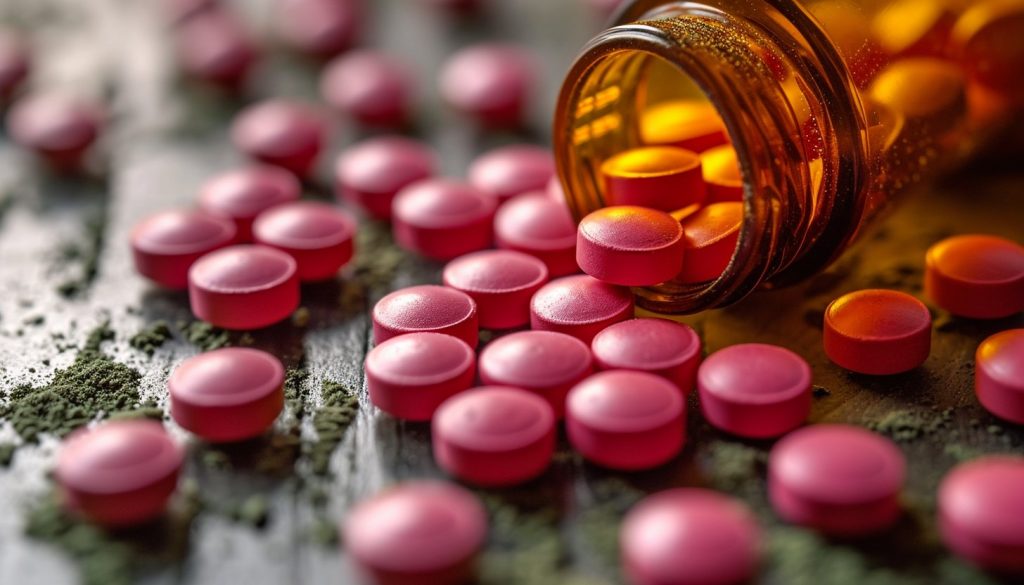THE type 2 diabetes is a chronic condition that affects millions of people around the world. Current treatments can control the disease, but therapeutic options remain limited and can present undesirable side effects. This is why theinterest in cannabidiol (CBD), a non-psychoactive compound found in cannabis, continues to grow thanks to its therapeutic properties. In this article, we will discuss the potential of CBD in the treatment of type 2 diabetes and its mechanism of action.
Sommaire
ToggleThe action of CBD on cannabinoid receptors
THE cannabinoid receptors are proteins present in our body, involved in various physiological processes such as the regulation of appetite, the sensation of pain, inflammation or even blood sugar. There are two types of cannabinoid receptors: CB1 and CB2. THC, the main psychoactive component of cannabis, binds primarily to CB1 receptors, which causes its psychotropic effects.
CBD, on the other hand, does not cause a “high” effect because it has a low affinity for these receptors. On the other hand, it acts indirectly on them by inhibition of the FAAH enzyme (fatty acid amide hydrolase), responsible for the degradation of anandamide, a neurotransmitter with protective effects on the central and peripheral nervous system. This increases the concentrations of anandamide in the body, which will then interact with cannabinoid receptors to modulate their actions.
The benefits of CBD in the management of type 2 diabetes
Treatment of type 2 diabetes mainly aims to control blood sugar levels and prevent associated macrovascular and microvascular complications. Several preclinical studies suggest that CBD may have beneficial effects in this context.
Improved insulin sensitivity
Insulin resistance is a key factor in the development of type 2 diabetes. Research has shown that CBD could increase insulin sensitivity, thereby facilitating the use of glucose by cells and helping to regulate blood sugar levels.
Anti-inflammatory and antioxidant effects
Diabetes is often associated with chronic inflammation and increased oxidative stress, leading to organ and tissue damage. The anti-inflammatory and antioxidant properties of CBD could help protect cells against these attacks and thus prevent or alleviate the complications of diabetes.
Role in appetite regulation
Appetite control is crucial for people with type 2 diabetes to avoid excessive weight gain which could increase insulin resistance. CBD has been shown to contribute to the regulation of appetite, by acting in particular on the cannabinoid receptors present in the central nervous system.
Prevention of diabetic neuropathy
Diabetic neuropathy, which manifests itself as pain, numbness and sensory disturbances, affects up to 50% of diabetic patients. Studies suggest that the CBD could help prevent this complication by protecting nerves and reducing peripheral inflammation.
Conclusion and future outlook
Promising results from preclinical studies have sparked enthusiasm for the use of CBD in the treatment of type 2 diabetes. However, clinical data still remains limited and it is necessary to conduct rigorous clinical trials to evaluate the real effectiveness of CBD in diabetic patients.
In the meantime, it is recommended to consult your doctor or healthcare professional before using CBD products, especially for people on medication, as CBD can interact with certain molecules and modify their effectiveness.
The different forms of CBD available
For those interested in experiencing the effects of CBD, it is important to note that there are a multitude of forms and concentrations. Here are some examples:
- Oils and tinctures: they are ingested sublingually (under the tongue) and can be dosed very precisely using the dropper.
- Capsules and tablets: they are convenient for those who prefer precise dosing and make it easier to integrate CBD into the daily routine.
- Vaporization: allows rapid absorption of CBD by the lungs and offers almost immediate effects.
- Cosmetics: ideal for locally relieving inflammation or joint pain, thanks to their direct application to the skin.
The choice of form and concentration of CBD will mainly depend on individual needs and preferences. It is essential to always check the quality of products and their compliance with regulatory standards, particularly with regard to THC content.



